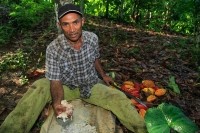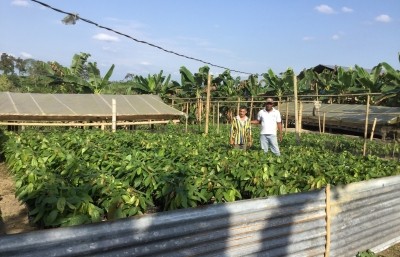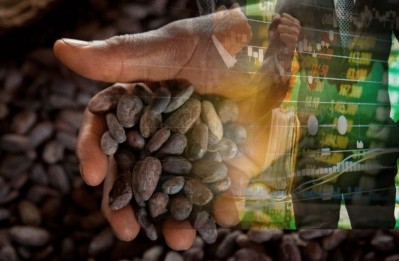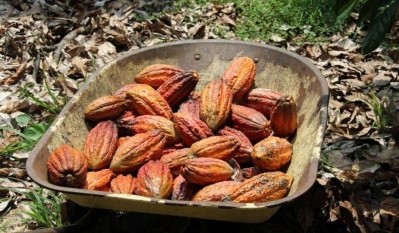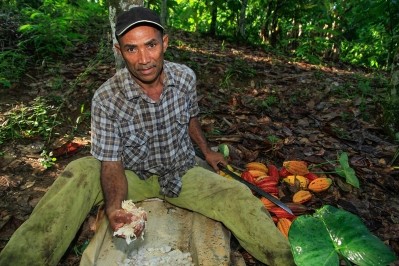CCN-51: Cocoa’s shining light or a risky monocrop?
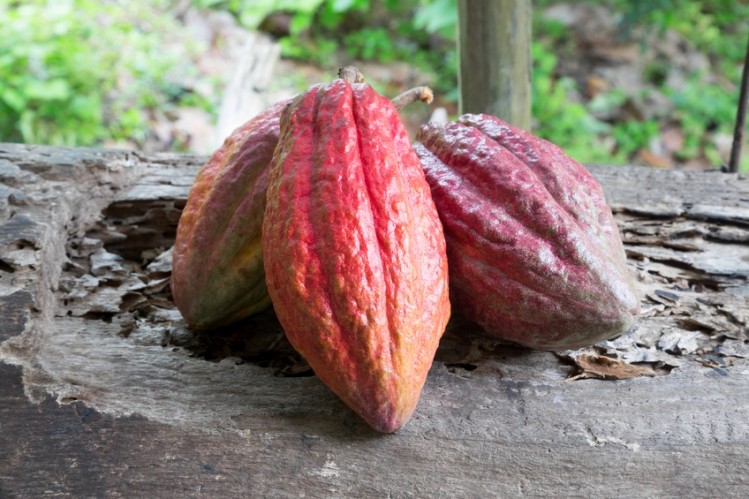
Cocoa variety CCN-51 is resistant to fungal diseases and has the potential to produce four times more in Latin America compared to fine flavor varieties such as Nacional.
A 2014 article in the Wall Street journal headlined ‘A Sour Bean Sweetens Cocoa Supply’ said CCN-51 had a name reminiscent of a Star Wars droid and the potential to plug forecasted cocoa shortfalls.
But some supply chain players say CCN-51 risks becoming a monocrop in some nations and claim it is diminishing Latin America’s cocoa quality as farmers neglect fine flavor cocoa.
Valrhona: ‘A disaster for Ecuador’
Coleccion Castro Naranjal (CCN-51) was created in Ecuador by Homer Castro in the 1960s, but wasn’t widely planted in the country until El Niño repercussions devastated the country’s fine flavor Nacional crop in 1997/98.
Pierre Costet, taste masters division at Valrhona,told ConfectioneryNews "I think it has been a disaster for Ecuador.
“Ecuador 10 years ago was producing only 80,000 metric tons (MT) a year. This year they will produce around 240,000 MT a year, mainly with this variety which is a hybrid that gives you a very very bad cocoa and a very bad chocolate."
Some industry sources say CCN-51 cocoa can be blended with fine flavor varieties for a well-rounded chocolate.
Countries focused on quality
Valrhona’s Pierre Costet said some countries have rightly decided to add value in cocoa and focus on quality. He highlighted the Dominican Republic, which has reduce its reliance on US exports to build a market in Europe for its fine flavor cocoa, he said. CCN-51 or any imported cocoa variety is not allowed to be brought to the Dominican Republic under government rules designed to prevent diseases.
Abandoning Arriba
But Costet said: "The problem is [CCN-51] gives farmers an incentive to abandon the Nacional [Arriba] variety.”
Fine flavor variety Arriba Superior Época (ASE) makes up 37% of cocoa production, but is now followed closely by CCN-51, which accounts for 36%, according to a 2015 US Department of Agriculture report.
“Unfortunately a lot of small producers have quit the Nacional variety to plant CCN-51,” said Costet. “…Now the premium paid for cocoa from Ecuador is the same premium as in Cote D'Ivoire."
He continued: "Ten years ago you would have paid more than £500 ($652) per MT over the London market for what we call Arriba cocoa from Ecuador. Now if you want cocoa that's supposed to be Arriba, you will pay about £150 ($196) per MT over the London price. The premium has fallen so quickly because the quality is no longer there."
He said Arriba beans are often mixed with CCN-51, making it tough for chocolate makers to guarantee consistent quality.
Diminishing quality
But can smallholders make up lost premiums from Nacional beans by producing higher yields through CCN-51?
"I don’t think so. In fact, the increase in the income is for the country,” said Costet. “The price of the cocoa beans from Ecuador has fallen in 10 years about 30%, but the total quantity exported by Ecuador is three times more than 10 years ago… the right question is to know if it makes profits for the small producers and that's not the case."
He said Ecuador will benefit from CCN-51 in the next three to five years, but claimed this will destroy the quality cocoa for which it is renowned.
“Tomorrow they will fight against Côte D'Ivoire and Ghana and they will lose this war because they cannot compete with Côte D'Ivoire or Ghana."
The World Cocoa Foundation (WCF) said it does not currently have a formal position on CCN-51 since its CocoaAction cocoa sustainability platform is active only in Côte D’Ivoire and Ghana, where CCN-51 is not grown. Mondelēz International declined to comment.
CCN-51 in commercial plantations
Hardman Agribusiness’s 'Destruction by Chocolate' report called CCN-51 “the best known cacao variety in the world”.
It anticipates future demand for cocoa will be met by a professional sector in Latin America, primarily cultivating CCN-51
It interviewed cocoa managers that say CCN-51 has the potential to achieve yields of three MT per hectare – far higher than the global average of 0.5 MT in 2013.
It says new plantations in Latin America are now typically planting 30‐40% fine flavor cocoa and 60-70% of bulk bean varieties – usually CCN‐51.
Mars recently acquired 485-hectare Ecuadorian cocoa farm Hacienda La Chola, which primarily cultivates CCN-51, alongside some fine flavor varieties.
Beneficial, but becoming a monocrop, says Technoserve
Non-profit organization Technoserve said CCN-51 could be beneficial for smallholders, but warned it has become a monocrop in some nations, presenting a risk to farmers.
It says farmers should plant both CCN-51 and fine flavor to hedge against pests, diseases or price fluctuations.
Victor Ganoza, Peru country director at Technoserve, told this site farmers planting fine flavor cocoa require a route to market
"It doesn't behove me as a small farmer to produce these high flavor cocoas if, number one, I don’t ferment them well, number two, I'm on a mountain in Peru. How do I get into market? The cost and logistics would kill me.
"If we're going to get the small farms into fine cocoa, it has to be under an associated scheme,” he said.
Cargill: More research needed on CCN-51
Taco Terheijden, director of sustainable cocoa at Cargill, told this site there was currently insufficient research on hybrids and new planting materials.
Asked if the benefits of CCN-51 for smallholders are proven, he said: "If it's there, I think it's in isolated cases and maybe applicable to a specific location, country or region, but I’m not drawn into a conclusion where the industry could benefit from it. And if it is there, then it should be made far more available so we could benefit from it."
He said Cargill was not purchasing CCN-51 in large volumes and added cocoa quality – rather than quantity – had been the focus of the recent World Cocoa Conference in the Dominican Republic.
Cargill doubts Latin America cocoa shift
But will Cargill’s future sourcing strategy concentrate on quality fine flavor cocoa or quantity from high-yielding varieties?
"Assuming that the majority of what we source and use will have to come from Côte D'Ivoire or West Africa, I do think it has to come not so much out of the new species but very much on improvement and resilience of existing hybrids or seedlings.
“If we can get more resilience by understanding better technology or innovation and implement it to our supply chains, that's where the future for Cargill would lie,” he said.
He said the balance of global cocoa production may shift slightly but said there would be “social drama” if Latin America started to compete with Africa as the leading cocoa producing region.
“We expect West Africa to be the dominant force in cocoa or a long time,” he said.
Scientific research
An October 2013 paper by Cristian Mello and Gail Hollander at Florida International University said CCN-51 could grow in full-sun and yielded almost four times as much as Nacional in Ecuador. They said that although CCN-51 lacked the flavor of Nacional, it commanded roughly the same price as Nacional.
Mello and Hollander said it made economic sense for farmers to shift from Nacional to CCN-51 in 2009 because the premium for Nacional beans ($405 per MT, or 20% more than CCN-51) did not make up for the lower yields, which were on average 211% less. They reported some farmers had shifted to CCN-51 as it was easier to cultivate and was the same price as Nacional beans, which did not provide enough income to live as the market wasn’t prepared to pay for the quality.
But the researchers said CCN-51 had eroded Ecuador’s cocoa quality, leading the International Cocoa Organization in 1994 to downgrade Ecuador’s fine flavor export status from 100% to 75%, where it remains today.
